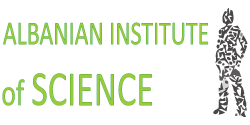Electoral Spending as Open Data
Some countries lack the process of the publication and transparency for Electoral Expenditure. Former communist countries, countries with a new democracy or the ones who do not acknowledge political freedom, have not put into law the obligation to publish the Electoral Expenditures. Even in places where this law exists, there are big difficulties in building models and control mechanisms that ensure information, transparency and public debate on Electoral Expenditure.
Albania lacks the process of transparency over electoral expenditures. Only in 2008, the Parliament approved the law that obliged Political Parties to report their finances to the Central Election Committee (the institution that manages the elections)[1]. This finance tables are not published from the parties. The Central Election Commission publishes some reports with abbreviated information, in a format that is very difficult to find, while the data is not available for use (excel; PDF)[2]. The political parties’ expenditures are never made public during the electoral campaign. Even when they are published on the Central Election Commission website, this is done 6 months after the elections in the best case, and after two years in the worst scenario. The Albanian Media is not informed about the electoral expenditures; the public debate based on data is not present and the citizens are not informed on these expenditures. Very few individuals have the knowledge about the political parties’ legal obligation in publication the electoral expenditures.
To ensure transparency with the Public Spending, Open Data Albania worked in building tools and graphic presentations of Electoral Spending (2009 & 2011)[3]. This was made possible by programmers and designers of the Albanian Institute of Science. Till now our project was focused:
- Gather data on the electoral expenditures. The source of information: the Ministry of Finance for the part of the income that is covered from the National Budget; the PDF table published by the Central Election Commission; information taken from political parties; audit reports from accounting companies.
- The data were processed into common tables for the 55 political parties, grouped in various categories, like the political parties’ total income; the total of expenditures; income divided based on the source; the income according to the donor; expenditures according to regional units.
- Build tools for the data visualization.
- Incorporate the data in the catalog /database of Open Data Albania, a catalog that includes statistics on Albania’s economy and society. Open Data Albania is an Albanian Institute of Science project.
- Distribute and design the data to networks, forums and social media.
- Announce the datasetElectoral Spending Albania through a press conference and encourage the present journalists from various media outlets to publish the data on electoral expenditures[4].
The realization of this idea was something brand new for the country. No graphic presentation has illustrated before the expenses of the electoral subjects in this country. In addition, since the political parties financing in Albania has different features in comparison to other countries, the graphic tools that will be build will be brand new and compatible only with countries that have an electoral system similar to Albania’s. This have to do with giving to individuals a more transparent model in understanding how the electoral subjects spend their money, who are the donors of the political parties, who are the most sensitive points of the electoral campaigns.
This leads to public debates between the parties or to an account – giving process between the subjects and their respective supporters
[1] http://open.data.al/en/lajme/kat/kid/81/titulli/Shpenzime%20Elektorale%202011 & http://open.data.al/en/lajme/kat/kid/83/titulli/Shpenzime%20Elektorale%202009
[2] http://open.data.al/sq/lajme/lajm/id/782/Tema-Financimi-Wake-Up
http://open.data.al/sq/lajme/lajm/id/756/Fushata-zgjedhore-fillon-pa-transparence-financiare
http://open.data.al/sq/lajme/lajm/id/753/Albania-Parties-Ignore-Call-For-Donor-Transparency




